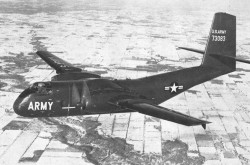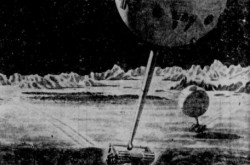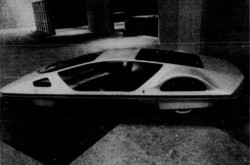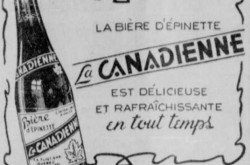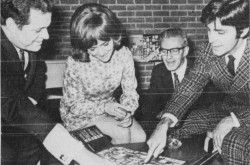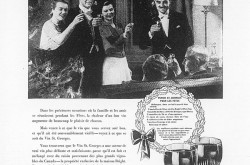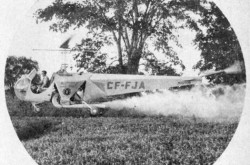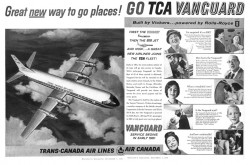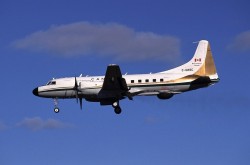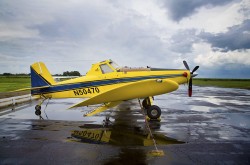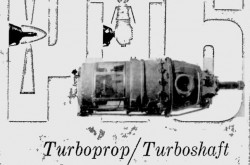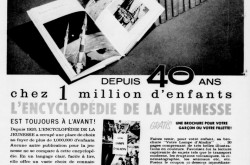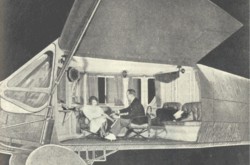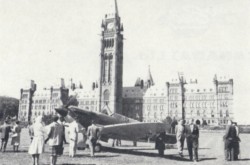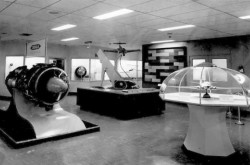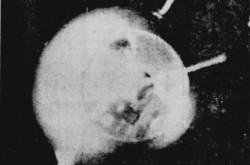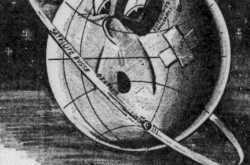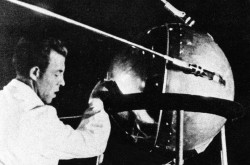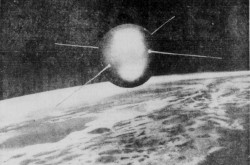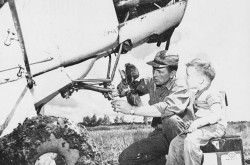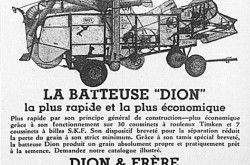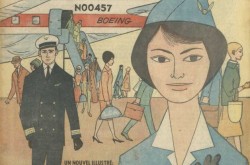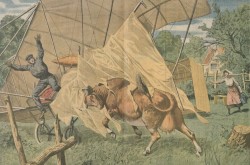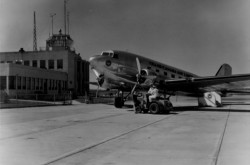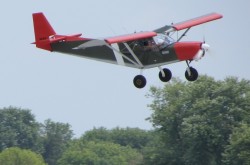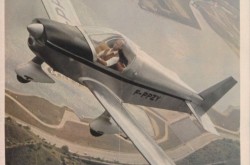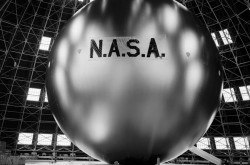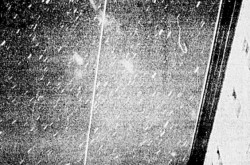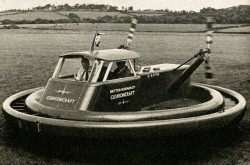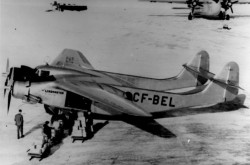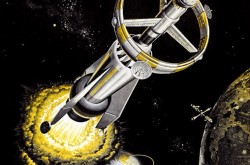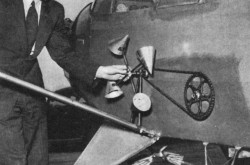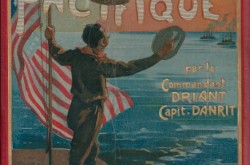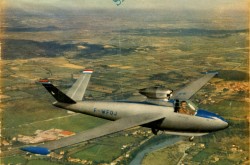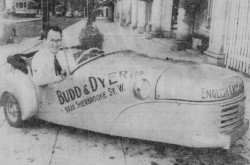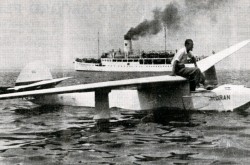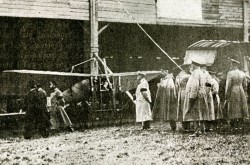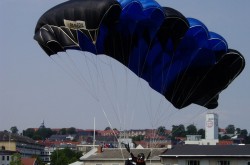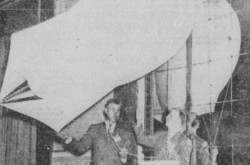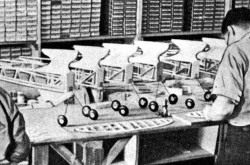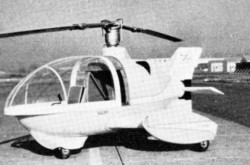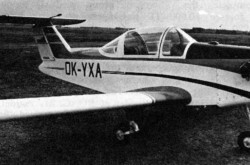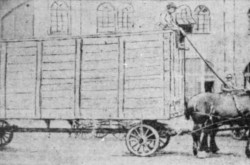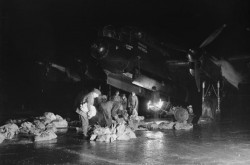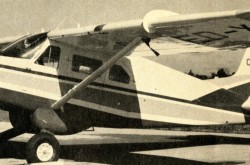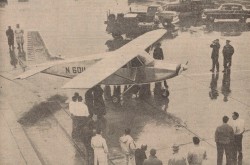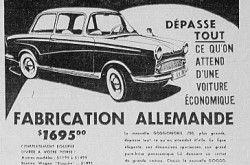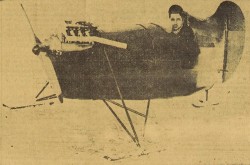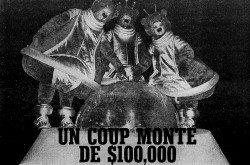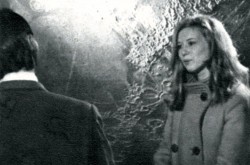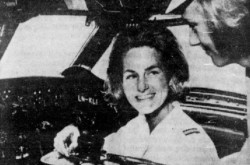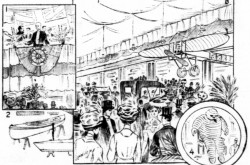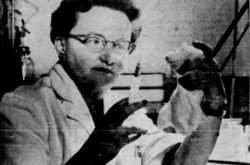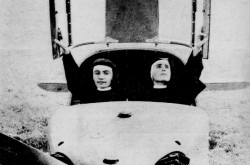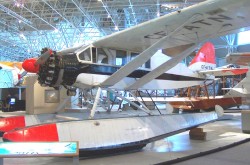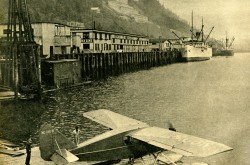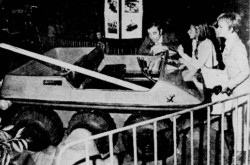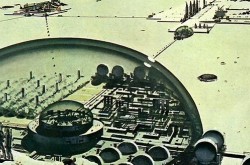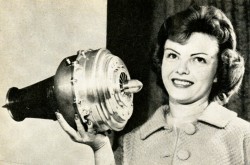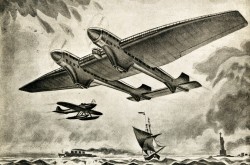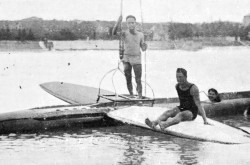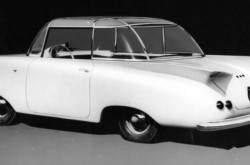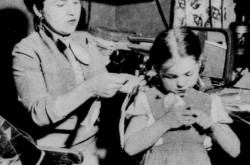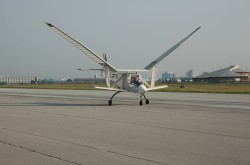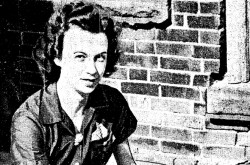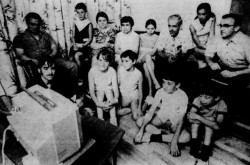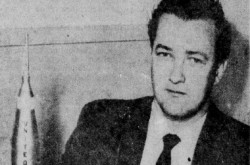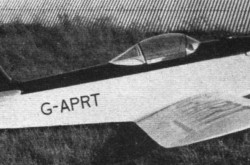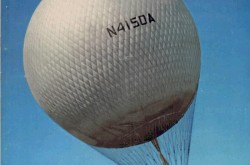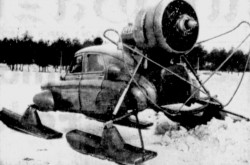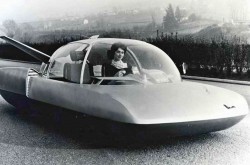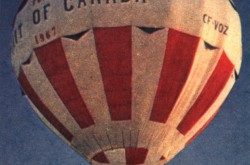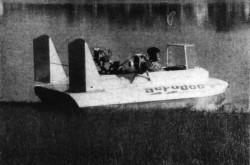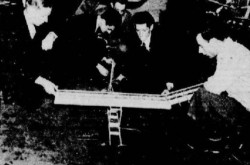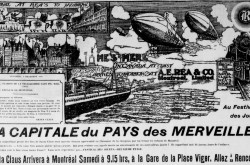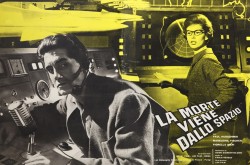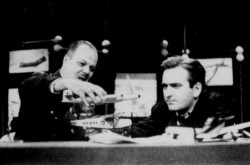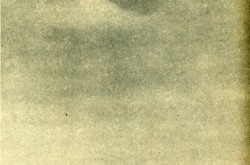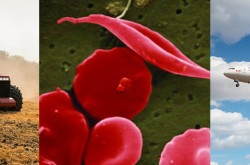A small Ontarian flying truck relocated in the land of the kiwis: The Found FBA-2 bush airplane

Greetings and salutations, my reading friend. Would it be alright with you if this issue of our blog / bulletin / thingee dealt with an aircraft which can be found in the amazingly impressive collection of the Canada Aviation and Space Museum, in Ottawa, Ontario, rather than with a photograph found in a periodical? Our topic would still be anniversarial in nature, of course. Yours truly does not wish your hamster to fall off its wheel.
Are we ready? Wunderbar.
While the Second World War was still raging, Dwight and Sherman R. “Mickey” Found, respectively ex-pilot and pilot for Canada’s national air carrier, Trans-Canada Air Lines (TCA), today’s Air Canada Incorporated, as well as another of their brothers, Grey Found, began to work on a utility / bush airplane project smaller and less expensive than existing aircraft. They made a scale model which was tested in 1945 in the wind tunnel of the University of Toronto, in Toronto, Ontario. The 3 men founded Found Brothers Aviation Limited in 1946.
The manufacturing of a 2-seat proof of concept prototype, the FBA-1, began in Agincourt, Ontario, in a vegetable cellar, it seems, before continuing in a hangar at the Toronto Flying Club, in Malton, Ontario. The Found brothers then hoped that this aircraft would compete with both the all-new Canadian Fleet Canuck light / private airplane and other light / private airplanes, mostly American ones, of the time. With the support of another brother, Nathan Keith “Bud” Found, and 2 engineer colleagues working for TCA, they completed the FBA-1 and made a first flight in July 1949.
Satisfied with the results of the flight tests, Found Brothers Aviation began developing a 4-seat utility / bush airplane, the FBA-2, no later than early 1951. A dozen engineers from A.V. Roe Aircraft Limited (Avro Aircraft), a subsidiary of the British industrial giant Hawker Siddeley Group Limited based in Malton, worked part-time on the project. The lack of money, however, considerably slowed the progress of the small team.
Is it necessary to mention that Avro Canada and Hawker Siddeley Group have been mentioned several times in our blog / bulletin / thingee since March 2018? No? Very well.
Interested in the Found Brothers Aviation project, John David Eaton, owner of a small regional airline based in Ontario, Georgian Bay Airways Limited, and president of T. Eaton Company Limited, the largest department store chain in Canada and a firm mentioned in January 2019 and June 2020 issues of our you know what, agreed to finance it around 1959.
The FBA-2 prototype made its first flight in August 1960 – and here is the anniversary we are commemorating today! This utility aircraft usable on skis, wheels or floats, a light bush airplane in a way, designed to meet the needs of users from various continents (Africa, America and Australasia), gave birth to an stretched version with 5 seats.
In 1964, Found Brothers Aviation moved to a larger factory located in Rexdale, a suburb of Toronto. The assembly of the FBA-2s, just before their test flight, apparently took place in the hangar occupied by an aircraft maintenance and repair firm from Ste. Catherines, Ontario, Genaire Company Limited, at Toronto International Airport. The first FBA-2, a solid and reliable aircraft, entered service in 1964. Georgian Bay Airways operated a few / several aircraft of this type. And yes, my eagle-eyed reading friend, Genaire was indeed mentioned in a February 2019 issue of our blog / bulletin / thingee.
In mid-1965, Canadair Limited, a subsidiary of the American defence giant General Dynamics Corporation, became the representative of Found Brothers Aviation in Thailand, the Philippines and Malaysia. The small aircraft manufacturer hoped that this first sales agreement would allow it to break into the international market. These hopes turned out to be unfounded. And yes, Canadair and General Dynamics were mentioned in many issues of our you know what, but do you know since when? Sigh. Go see when you have the time.
In February 1966, in response to a request from Found Brothers Aviation dating back to 1964, Canada’s Department of National Revenue imposed an entry fee of 15% for the import of aircraft similar to the FBA-2. Indeed, the federal measure targeted more or less directly the very popular Cessna Model 180. Found Brothers Aviation hoped that this action would lead to the abolition by the American government of the entry duty of 10% which affected the importation of Canadian aircraft. Its hopes were quickly dashed. The new Canadian entry fee also proved very unpopular with private pilots, small operators and the aviation press. Worse still, it did not work.
The last FBA-2 left the factory in late 1966 or early 1967. It apparently remained unsold. Found Brothers Aviation ultimately produced 27 FBA-2. By way of comparison, Cessna Aircraft Company made nearly 6 200 Model 180s between 1953 and 1981.
The arrival of financial advisers was a game-changer. The departure, more or less forced it was / is said, of “Bud” and “Mickey” Found, at the beginning of 1966, led to a reorganisation of Found Brothers Aviation. Other brothers were no longer there either. With the support of the Department of Industry, Trade and Commerce, which gave it a small grant, the firm moved to Grand Bend, Ontario, in the spring of 1967.
It also launched a 6-seat derivative of the FBA-2. This Model 100 Centennial flew in April 1967, the very year of the centennial of Canada’s Confederation. Designed to perform a variety of functions, from aerial spraying to the transportation of injured people, the Centennial was to occupy the niche between the aforementioned Model 180 and the de Havilland Canada DHC-2 Beaver, a bush airplane known to all mentioned in May 2019, August 2019 and March 2020 issues of our blog / bulletin / thingee.
The lack of a well-established distribution network meant that Found Brothers Aviation was unable to sell its new aircraft in a market dominated by American aircraft manufacturers. A sales project in Pakistan failed, for example. The Centennial also proved to be heavier than expected. Its performance suffered. The installation of a more powerful engine proved essential. For the main investor, Eaton perhaps, this additional cost was the last straw. He pulled out towards the end of 1968.
Three of the 5 Centennials in production remained unsold when Found Brothers Aviation closed, in December 1968. Some groups briefly considered acquiring the production rights for the Centennial. They ultimately decided not to get involved.
As the 1960s drew to a close, the Canadian aviation industry found itself in a paradoxical situation. For the first time in approximately 35 years, no single-engine bush airplane was in production in Canada.
Is this the end of our story? Err, no.
Around 1994-96, “Bud” Found purchased the production rights for the FBA-2 and transferred them to Found Aircraft Canada Incorporated of Parry Sound, Ontario, a firm founded in 1996 to restart production of this aircraft. In 1999 and 2000, Transport Canada and the Federal Aviation Administration, the organisation with the power to regulate all aspects of civil aviation in the States United mentioned several times in our you know what since June 2018, allowed the small aircraft manufacturer to restart production without having to recertify the FBA-2 from Alfa to Zulu (Hello, EP and EG!) – an expensive procedure if there was / is one.
The Federal Economic Development Initiative in Northern Ontario negotiated a loan with a major Canadian bank. Better yet, the townships of Parry Sound and Surrey funded the construction of a small factory which they rented to Found Aircraft Canada – much to the chagrin of some residents. A modernised FBA-2 flew in September 1996. The first brand new FBA-2 Bush Hawk followed in October 1998.

A typical Found Aircraft Canada / Found Aircraft FBA-2 Bush Hawk, Lachute, Québec, October 2007. Wikipedia.
In 2004, Found Aircraft Canada created a subsidiary, Expedition Aircraft Limited, to produce the aircraft. With financial support from the (Ontario? Canadian?) government, new investors launched the development of a modified version of the Bush Hawk. This Expedition E350 was born around 2006, after the departure, more or less forced, it was / is said, of “Bud” Found.
The high cost of the development of the aircraft struck a heavy blow to the firm, however. Found Aircraft Canada / Expedition Aircraft were forced to declare bankruptcy in June 2013. They ceased operations in 2014.
Found Aircraft Canada / Expedition Aircraft produced 42 Bush Hawk and Expedition E350 between 1998 and 2013. Virtually all of these aircraft flew in the United States and Canada. Seven wore the colours of the United States Fish and Wildlife Service, an agency of the United States Department of the Interior, as of 2020.
The New Zealand aircraft manufacturer Pacific Aerospace Limited, a firm born in 1973 under the name New Zealand Aerospace Industries Limited, acquired the production rights for the Expedition E350, apparently renamed E350 Expedition, around September / October 2016. The tooling arrived in New Zealand around that time.
If Pacific Aerospace hoped to complete an aircraft in mid-2017, various problems put a spoke in its wheel. A manufacturing project in China by a firm created for this purpose, Běijīng Fàn Tàipíngyáng Hángkōngjìshù Yǒuxiàn Gōngsī, a subsidiary of Běijīng Tōngyòng Hángkōng Yǒuxiàn Gōngsī, thus had to be abandoned.
The first Expedition made in New Zealand may, I repeat may, be delivered to an American distributor in the summer of 2020.
I hope you will join me in wishing Pacific Aerospace the best of luck.
See ya later.
Before I forget, the FBA-2 of the Canada Aviation and Space Museum was manufactured in June 1963. Used to complete the final certification tests for this type of aircraft, it was also used by Found Brothers Aviation as a demonstration aircraft until the firm’s closure. The Centennial College of Applied Arts and Technology of Scarborough, Ontario, purchased the FBA-2 in 1969. It was used for 8 years as a ground instruction airframe by the college’s aircraft maintenance technician program. The Centennial College of Applied Arts and Technology donated the FBA-2 to the museum in April 1979.
This writer wishes to thank all the people who provided information. Any mistake contained in this article is my fault, not theirs.


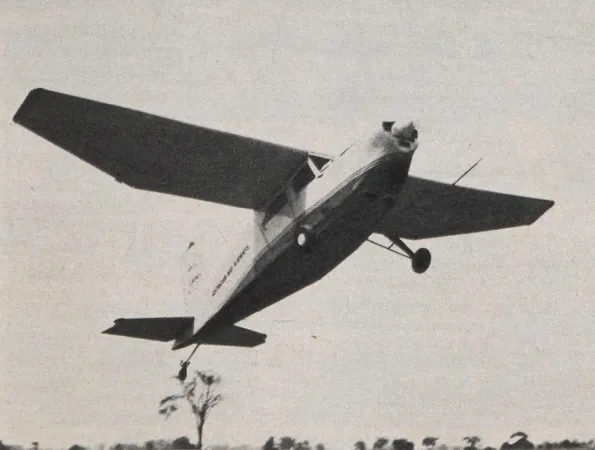

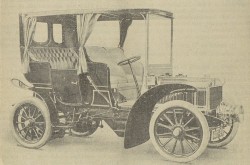

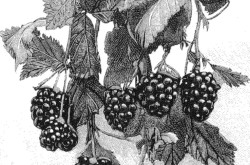
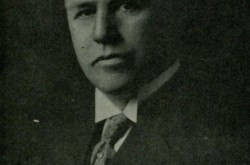
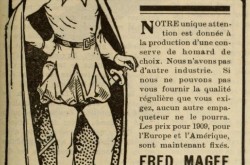
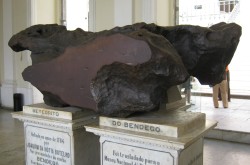
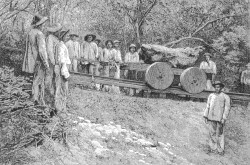
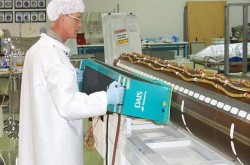
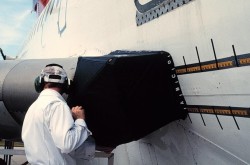
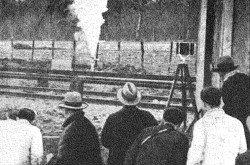
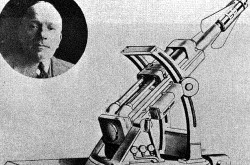
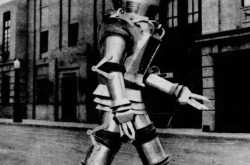

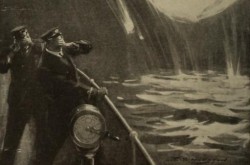
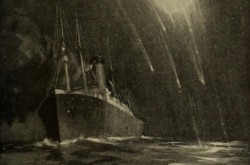
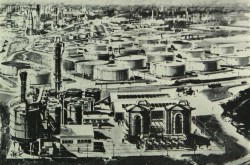
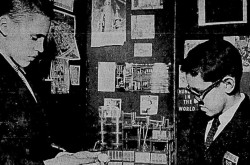
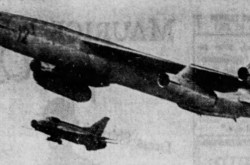
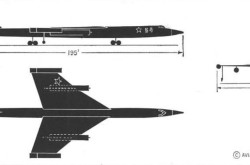
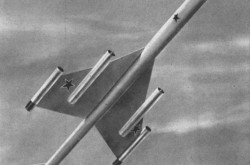
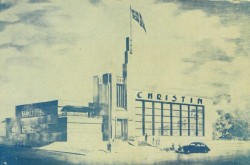
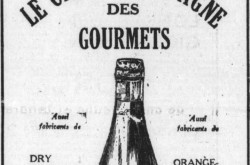
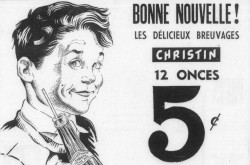
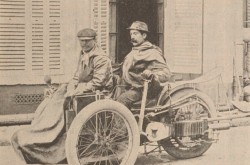
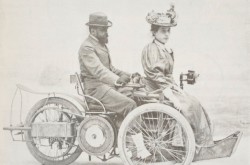
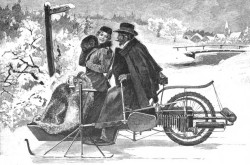
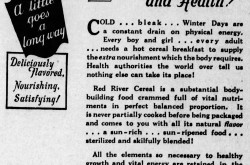
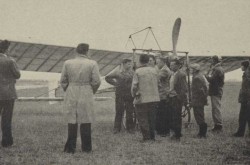
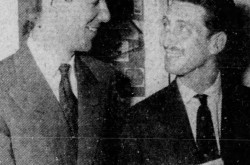
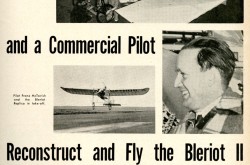
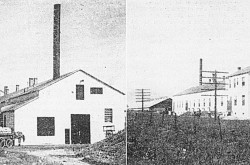
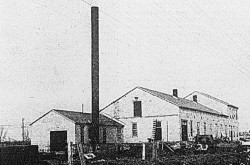
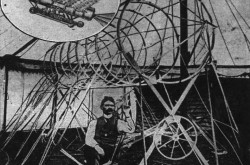
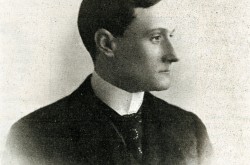
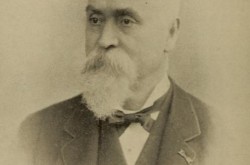
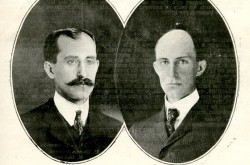
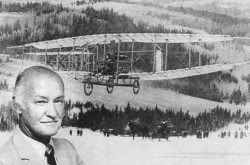
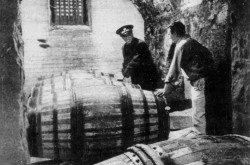
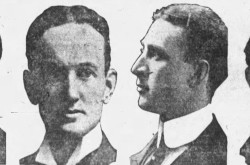
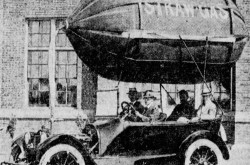
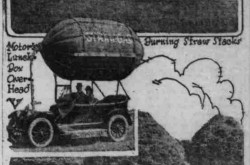
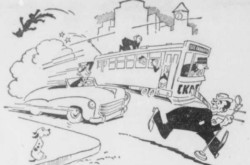
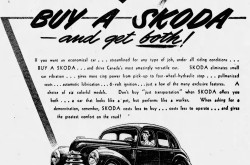
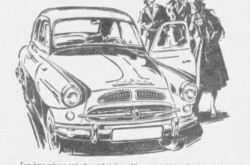
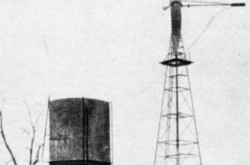
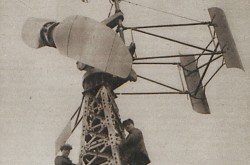
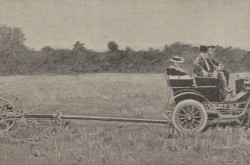
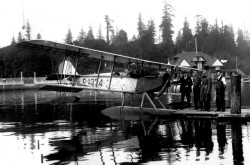
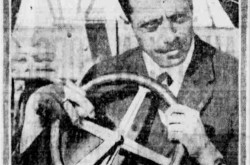
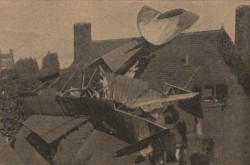
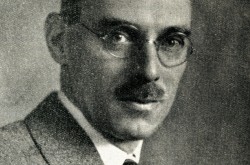
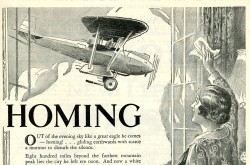
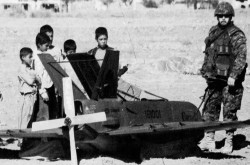
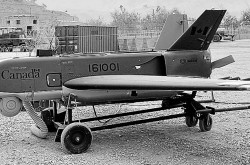
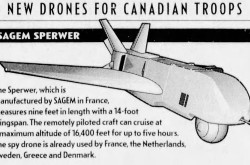
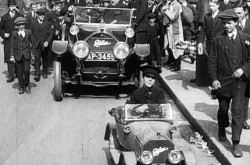

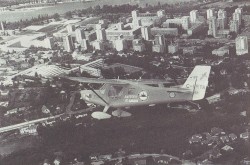
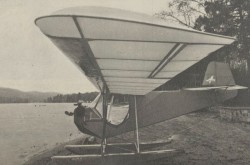
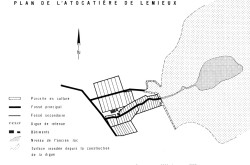
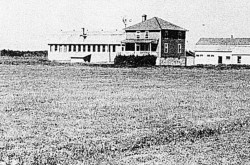
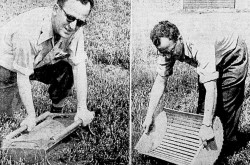

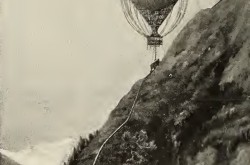
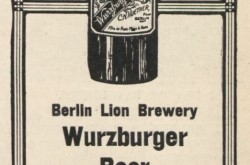
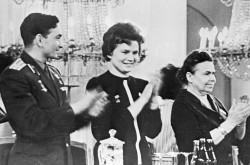
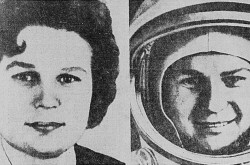
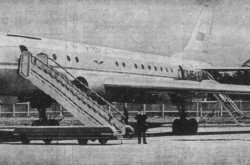
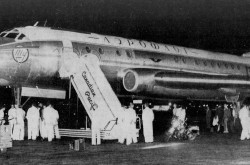
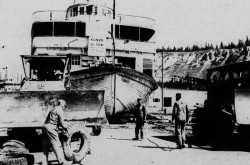
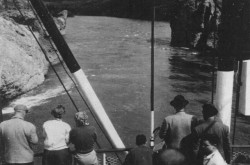
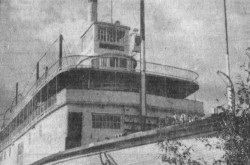
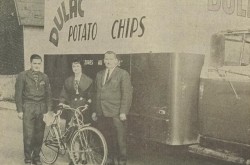
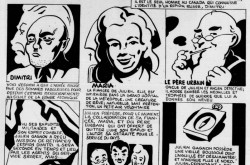
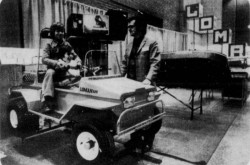
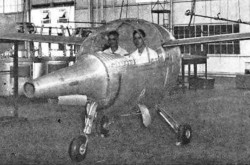
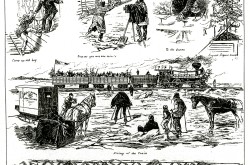
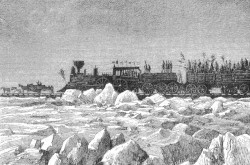
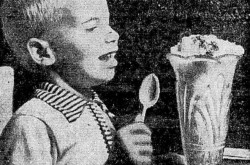
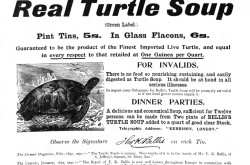
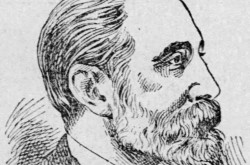
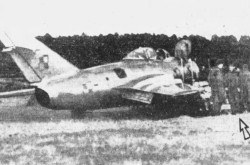
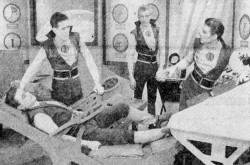
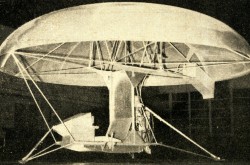
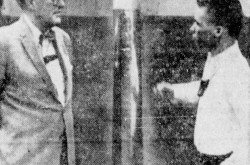
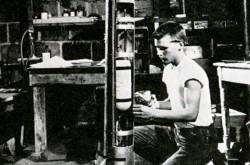
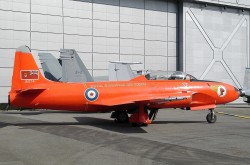
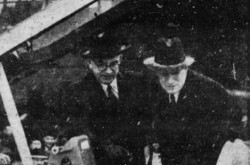
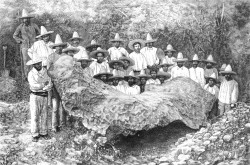
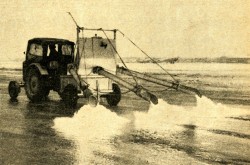
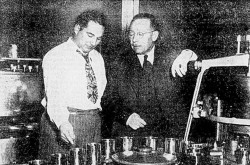
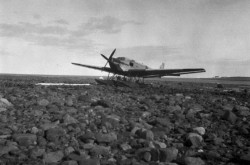
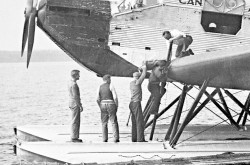
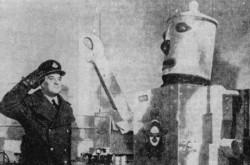
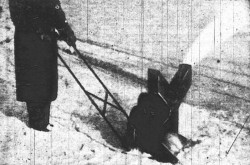
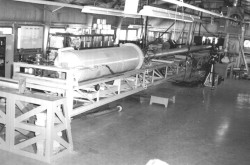
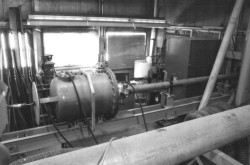
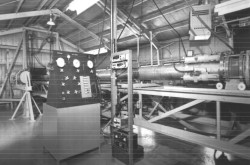
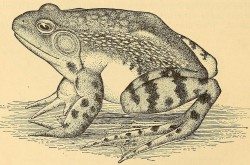
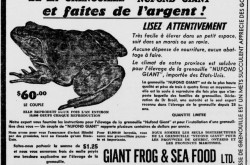
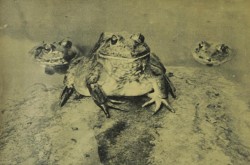
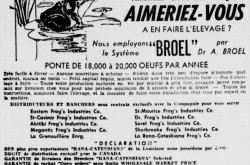
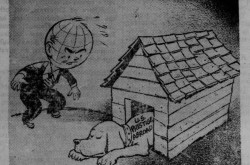
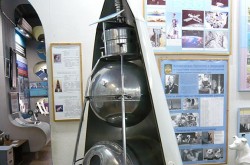
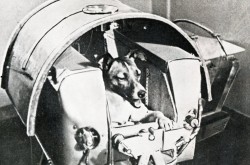
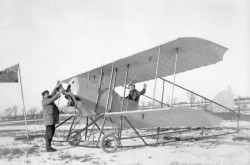
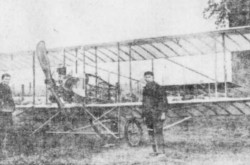
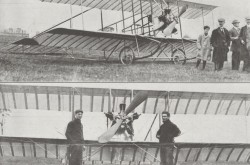
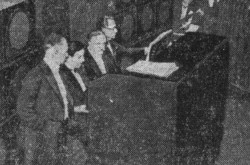

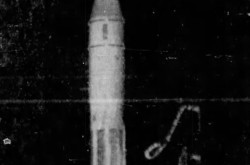
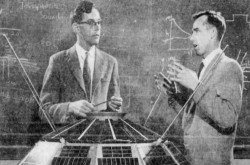
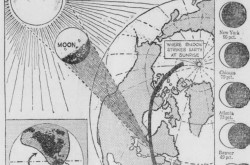
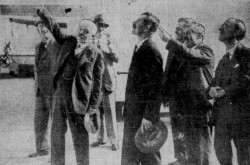
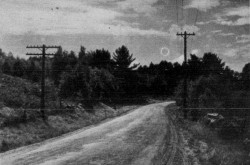
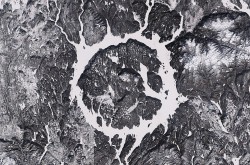
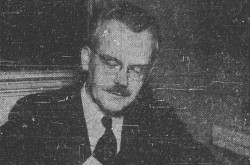
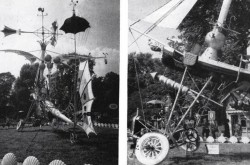
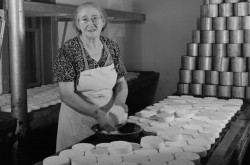
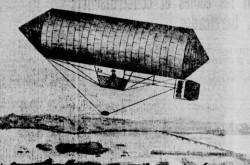
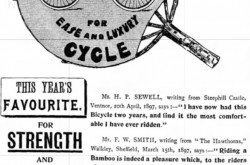
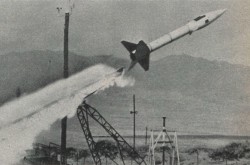
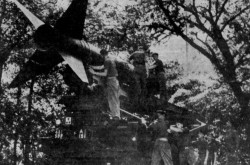
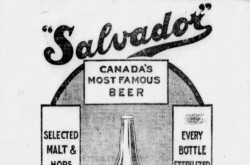
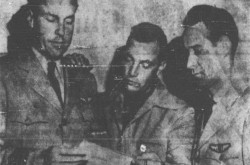
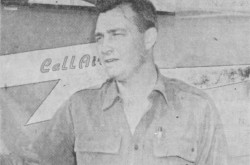
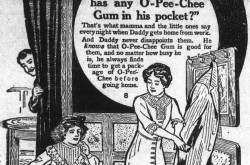
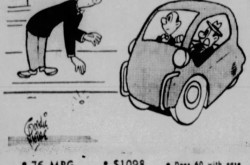
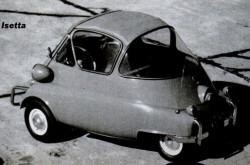
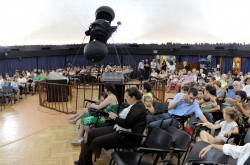
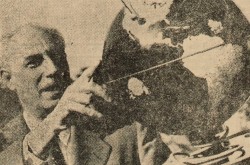
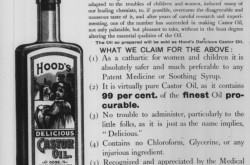
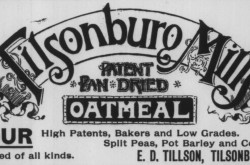
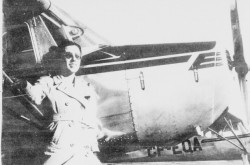
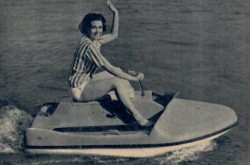

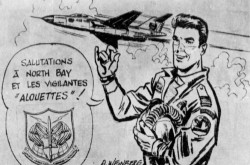
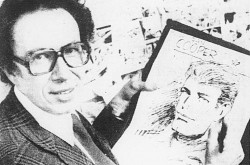
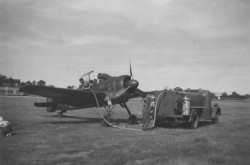
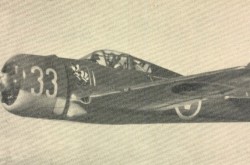
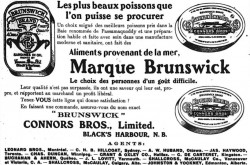
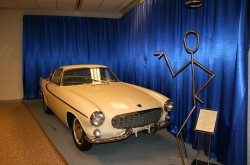
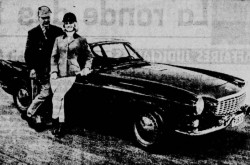
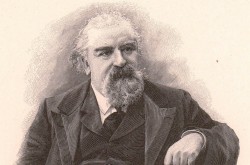
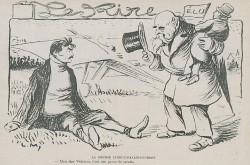
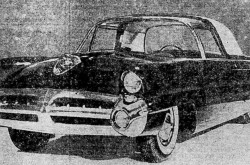
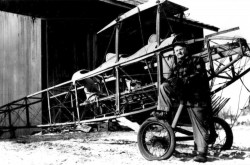
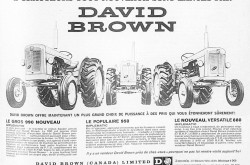
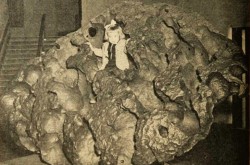
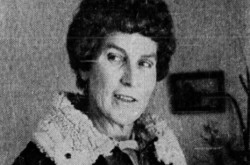
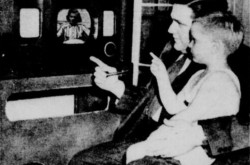
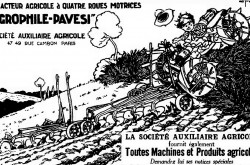
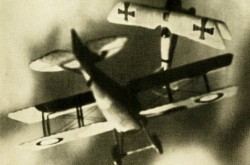
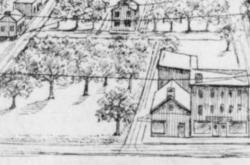
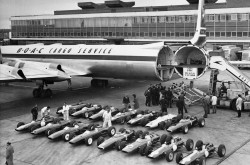
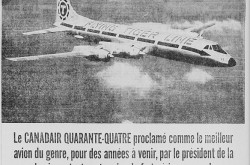
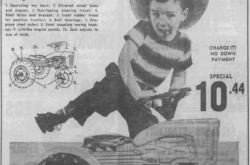
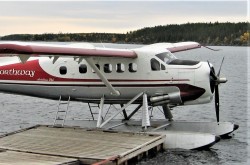
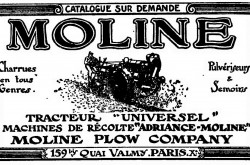
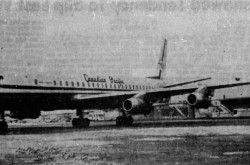
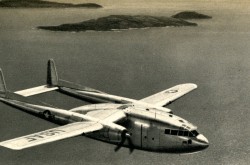
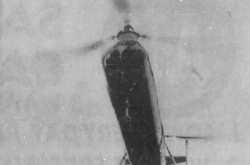
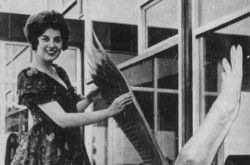
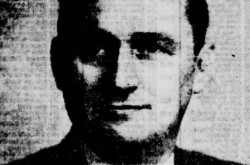
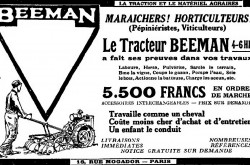
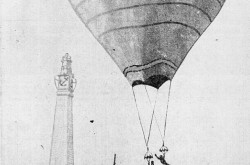
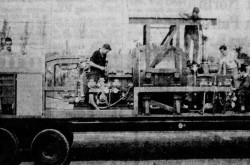
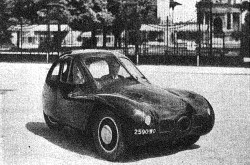
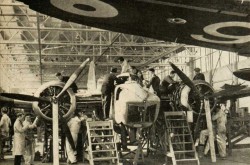
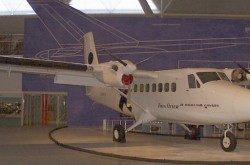
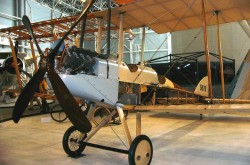
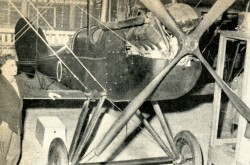
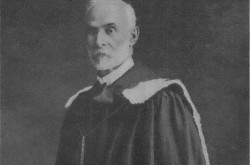
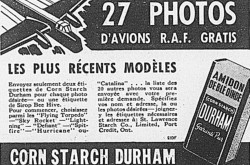
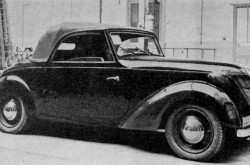
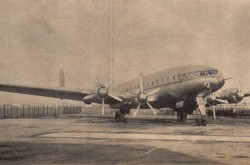
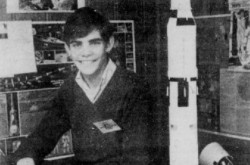

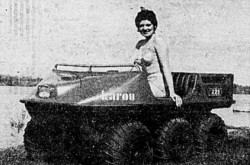

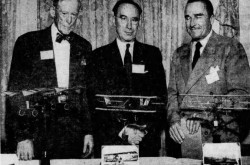
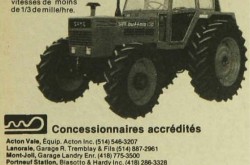
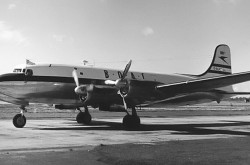
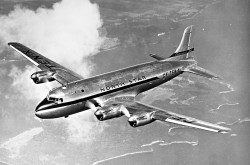
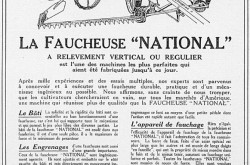
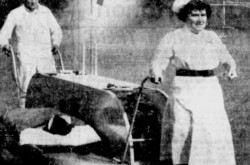
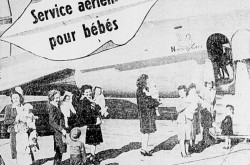
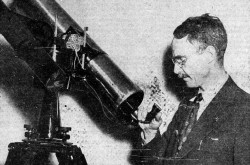
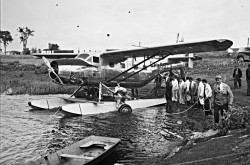
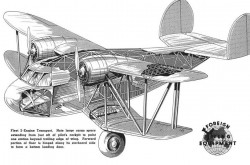
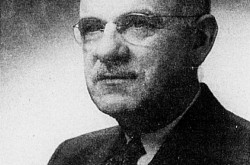
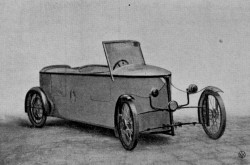
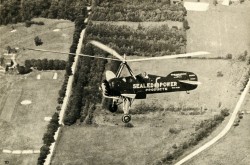
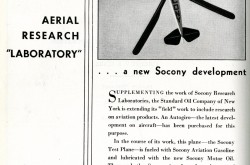
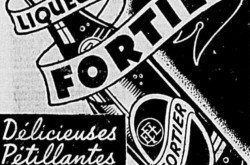
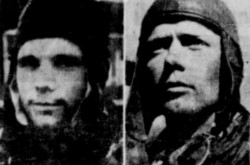
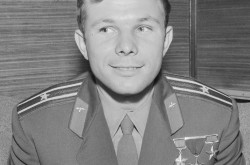
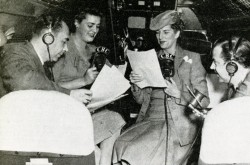
![Peter Müller at the controls [sic] of the Pedroplan, Berlin, Germany, March 1931. Anon., “Cologne contre Marseille – Le mystère du ‘Pédroplan.’ [sic]” Les Ailes, 2 April 1931, 14.](/sites/default/files/styles/thumbnail_7/public/2021-04/Les%20Ailes%202%20avril%201931%20version%20big.jpg?h=eafd0ed4&itok=WnBZ5gMf)
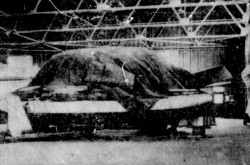
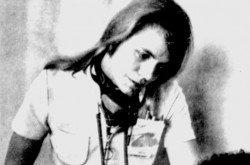
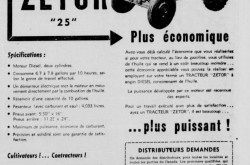
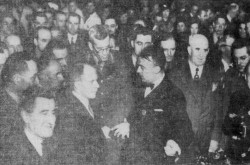
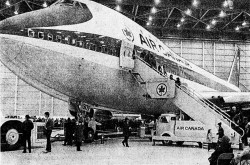
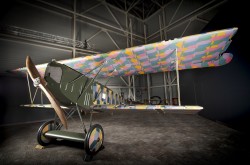
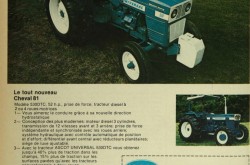
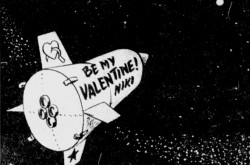
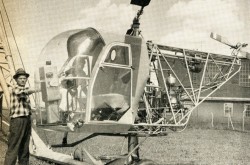
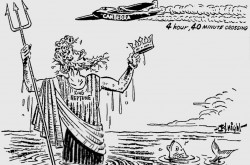
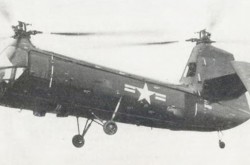
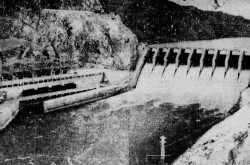
![One of the first de Havilland Canada Chipmunk imported to the United Kingdom. Anon., “De Havilland [Canada] DHC-1 ‘Chipmunk.’” Aviation Magazine, 1 January 1951, cover.](/sites/default/files/styles/thumbnail_7/public/2021-01/Aviation%20magazine%201er%20janvier%201951%20version%202.jpg?h=2f876e0f&itok=DM4JHe5C)
